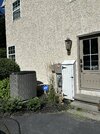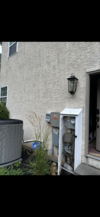After reading threads here on placement of Powerwalls, I wondered about the best location and how “stacking” is defined.
Can 3 Powerwalls be “stacked” like a deck of cards or must they be “stacked” side by side?
Garage is my preferred location but is it preferred/required to place Powerwalls next to main junction box, which is in our basement?
Main junction box is directly below garage. Might this make garage placement reasonably accessible?
Or is the focus more upon the location of my micro inverters which are outside near the garage?
Here are photos of exterior panels and basement panels:
Can 3 Powerwalls be “stacked” like a deck of cards or must they be “stacked” side by side?
Garage is my preferred location but is it preferred/required to place Powerwalls next to main junction box, which is in our basement?
Main junction box is directly below garage. Might this make garage placement reasonably accessible?
Or is the focus more upon the location of my micro inverters which are outside near the garage?
Here are photos of exterior panels and basement panels:





